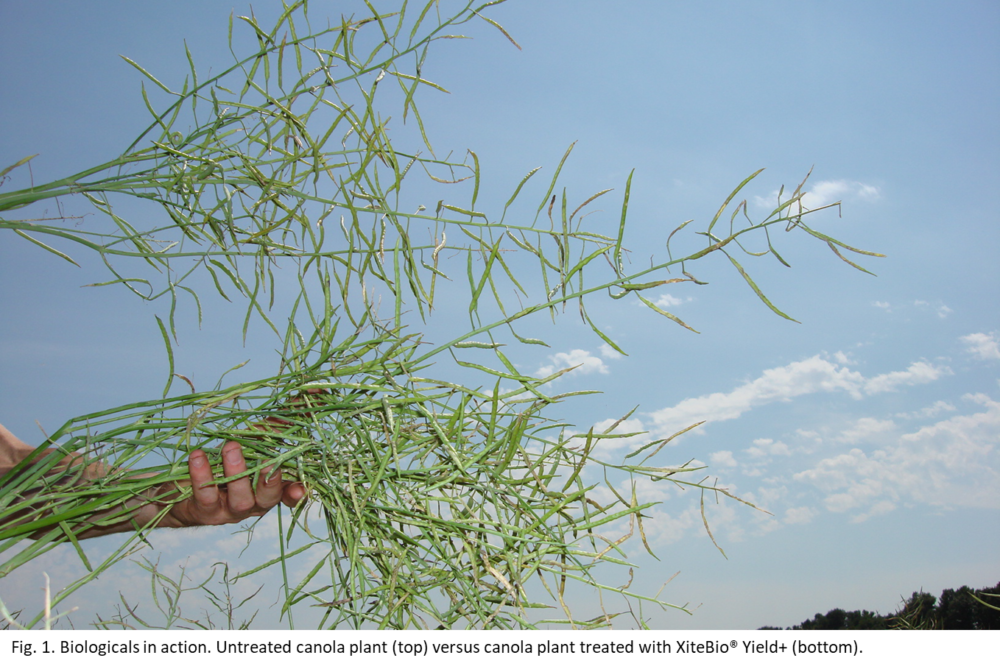From advanced farming machinery to pest & disease-resistant crop varieties, technological innovation has always been at the heart of improving the agriculture industry. This drive toward innovation is always on the minds of everyone in agriculture, especially growers. Growers are always looking for new ways to improve the efficiency of their operations. One of the leading innovations helping them do this in recent years has been the development of ag-biologicals. More and more producers are relying on the expanding world of ag-biologicals for their multitude of benefits, so in this week’s edition of Growing Possibilities we will be highlighting why they should be a part of your crop production plan.
Ag-biologicals harness the natural power of mostly natural microorganisms (bacteria, fungi, mycorrhiza). In recent years, PGPR (Plant Growth Promoting Rhizobacteria) are getting substantial attention from academics as well as growers from the crop production point of view. PGPR provide benefits deriving from the actions of naturally-occurring soil bacteria. These bacteria can supplement and even reduce/replace chemical fertilizers or crop inputs and enhance your soil fertility without breaking your wallet. Take the example of Rhizobium inoculants for legume crops. We don’t need to mention much about their significance or the importance of inoculants in growing legume crops like soybean, pea, lentil, etc. Besides these inoculants, many ag-biologicals even come in simple, ready-to-use liquid formulations. Application of liquid biologicals is incredibly easy. Just mix with your early post-emergent herbicides at first pass or apply in-furrow at seeding with water or starter liquid fertilizers. These options require no extra passes or additions to your work load. Just make sure your chosen ag-biological is compatible with any other crop inputs being applied.
So what do ag-biologicals actually do for your crops?
Different ag-biologicals will affect your crops in different ways. For example, XiteBio’s PGPR biological, popularly known as XiteBio® Yield+, utilizes three distinct modes of action to affect plant rhizospheres and help develop root systems & plant health resulting in better plant performance.
1) Phosphorous (P) Solubilization
Adequate P is essential for early plant growth and throughout the growing season. However, most P present in soil is bound to ions like calcium [Ca₃(PO₄)₂], iron (FePO₄), magnesium [Mg₃(PO₄)₂] and aluminum (AlPO₄), making it inaccessible to the plant. XiteBio® Yield+ releases enzymes that solubilize the phosphates from these ions, making more soil phosphates available for plant uptake and increasing potential plant P nutrition.
2) Phytohormone Production
Phytohormones (plant hormones) perform a variety of functions related to plant growth and development, with plants producing their own hormones and responding to externally produced hormones in the soil around them. XiteBio® Yield+ produces and releases phytohormones such as IAA (indole-3 acetic acid) into the surrounding soil, encouraging early plant growth and root development.
3) Siderophore Production
Iron (Fe) is required by plants for chlorophyll production in their leaves and is acquired by the acidification of the surrounding soil near plant roots. High pH and wet soil conditions prevent plant uptake of Fe. XiteBio® Yield+ releases siderophores into the soil, which collect Fe from the soil and make it more available to plant roots for uptake, lowering the risk of iron deficiency in plants.
Liquid ag-biologicals like XiteBio® Yield+ are an easy addition to any crop fertility plan and a good way to increase the efficiency and sustainability of your farm operations. Contact your crop input supplier to get your hands on some PGPR biologicals this season and get Mother Nature to start working for you! For further information you may also want to visit www.xitebio.ca.


